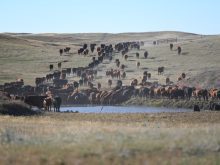The current series of articles were prompted by a couple of emails to further outline the process I use to buy individual companies. So don’t blame me for putting you through this! Hopefully, by the end, you will be able to relate to the small amount of number crunching required to make sound purchase decisions, with Excel being a great tool for comparing important metrics side by side.
Pipelines are one of my favourite sectors because of their consistent cash flow generation. They have been extremely out of favour until recently. In this example, I will compare TC Energy (TRP), Enbridge (ENB), somewhat smaller Pembina (PPL) and a U.S.-based Kinder Morgan (KMI). Prices mentioned are at the time I did my quick analysis.
Let’s first compare TRP with ENB. From a traditional valuation standpoint, ENB looks the best. The cost price/earnings (P/E) for a dollar of TRP earnings is $36.40, but just $18.80 with ENB. Another half-price sale? Plus, ENB has almost double the corporate efficiency as measured by return on equity (ROE) and return on assets (ROA). Better efficiency at a lower cost is what we want.
Read Also

Gentle treatments for pain in the neck
Heading toward year-end, people unknowingly tense up against the cold and busyness, causing neck pain that can often be treated with appropriate support and gentle mobility, athletic therapist Kathlyn Hossack says.

However, the picture changes when we look at cash flow metrics. A dollar of TRP cash flow only costs $9.40 but costs $11.80 with Enbridge, and as a bonus TRP drives 6.6 cents of cash flow from every dollar of assets, whereas ENB only derives 5.5 cents of cash flow from a dollar of assets. This is again opposite to the ROE and ROA picture. By the way, ROE, ROA, cash flow/equity (CF/E) and cash flow/assets (CF/A) are all percentage measurements, however, the per cent sign is rarely used.
Why is the picture so different?
How could the picture evaluating earnings be so different than evaluating cash flow? What political event affected TRP recently? The cancellation of Keystone resulted in major asset writedowns for TRP, significantly affecting earnings but not cash flow. I would select TRP as the slightly better investment based on these 2021 results. However, valuations change constantly and by the time you read this the ranking could change.
The next two companies, PPL and KMI, are, however, slightly better than either ENB or TRP. Kinder Morgan has the best price/cash flow (P/CF) ratio with the second-best CF/A. Pembina has the best 10-year cash flow growth and CF/A ratio with a cost (P/CF) similar to TRP and ENB.
You may think I’m indecisive as my wife or I own all four of these companies in different accounts. My approach is simply to buy what looks the best today then hold for a very long time, adding to positions when they look attractive. Because they are all high-dividend payers, it is important to place them in accounts for best tax efficiency. KMI is best suited for a registered retirement savings plan (RRSP) where the dividend is not subject to withholding tax. The Canadian companies can be placed into taxable, tax-free savings or registered retirement savings plan accounts with a preference toward the tax-sheltered accounts.
There are a couple more items I would like to draw your attention to. In a past article, I mentioned a preference for companies that derive at least 10 cents of cash flow for every dollar of assets. As you can see, none of these companies hit that threshold. Pipelines are very capital-intensive businesses, like farming. As such, they will not derive as much cash flow from a dollar of assets, as sexier industries like software. However, these assets are long lived and will continue to pump oil, gas and cash flow many years into the future.
My saying that, “Rules are for those who lack judgment,” is apropos with investing.
Additionally, capital-intensive businesses often lack free cash flow with the continual need for more capital assets, again not dissimilar to farming. If you look at the financial history of these companies, you will see they only turned free cash flow positive a few years ago. Why you ask? Well … it is very difficult to build new pipelines these days leading to a dearth of viable projects. Less new builds mean less competition and potentially higher fees down the road, even in the regulated environment they operate within. Inflation also enhances the value of existing infrastructure as new builds become more expensive.
The past seven to eight years have been very difficult in the pipeline business. However, like with oil and gas, I sense a brighter future ahead. The next article will feature a few of your favorite tech names for contrast.
















